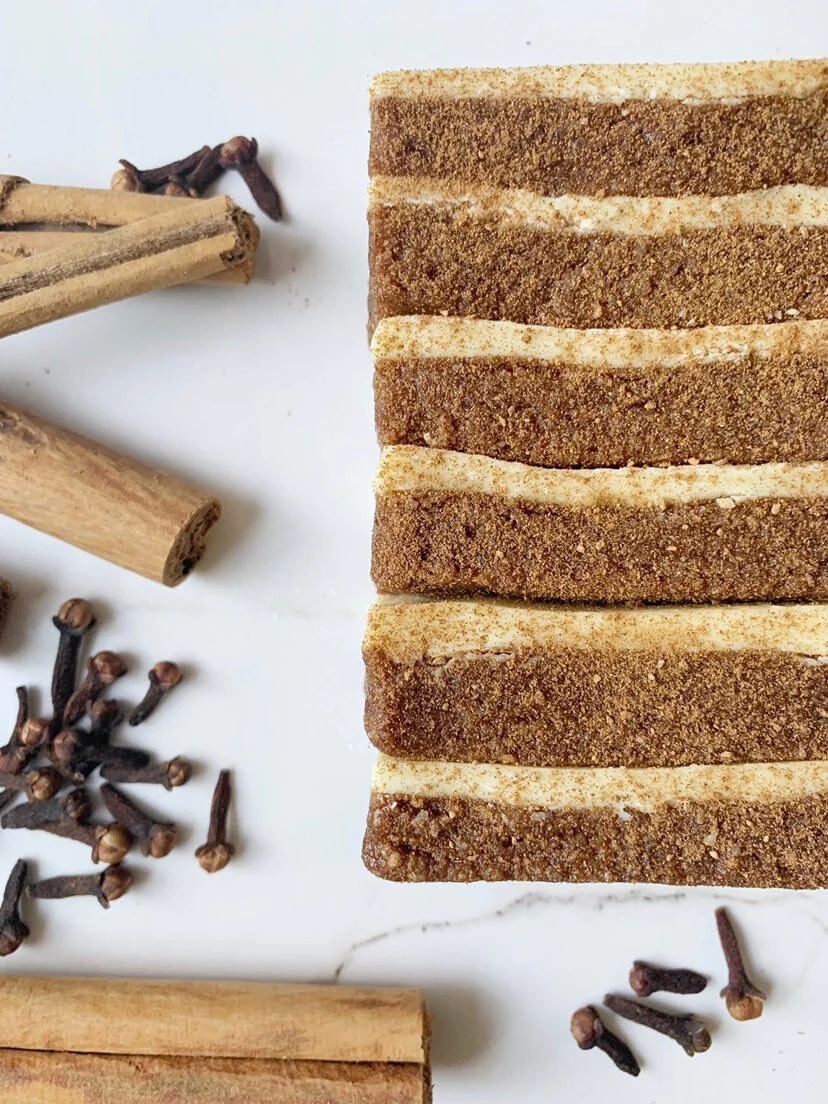5 Must-Have Tips For Going Gluten-Free
Whether by some sinister twist of fate or your own volition, you’ve found yourself at the start of gluten-free living; where grocery store trips are spent studying labels and Googling adaptations of your most cherished recipes; where you have to make two meals—one to accommodate gluten intolerance—and wash twice the amount of dishes to avoid cross-contamination. Overwhelmed by the unknown, frustrated by limitations, and surprised by how prolific gluten really is, I have ruined enough recipes to know that a gluten-free diet can feel intimidating and arduous.
I've shared on my Instagram a little bit about my daughter Kelsea’s health issues—her celiac disease and various food allergies. She was the inspiration for Cinnamomma’s gluten-free and vegan breads, sweetbreads, rolls, cookies, and holiday stuffing. She, like so many of you, has struggled with the substitutes and sacrifices but has done an immense amount of research on gluten, gluten alternatives, egg alternatives, and nutrition. She has found innovative ways to eat well and enjoy her food, and her health and wellness have improved exponentially.
I recently found out that my Hashimoto's disease (an autoimmune disorder causing underactive thyroid) is in a flare-up, which means that in order for my body to heal and improve, I too must avoid gluten, dairy, and egg for the foreseeable future. After years of learning from Kelsea, cooking for her, and then beginning the journey myself, I have picked up a few things that would be helpful to anyone going gluten-free.
First, let’s review what gluten is. Gluten is a group of proteins found in cereal grains like wheat, barley, and rye, and it is responsible for the elasticity of dough. Gluten is actually an important ingredient, containing iron, calcium, fiber, thiamin, riboflavin, and niacin. However, the chemicals and preservatives used to grow our wheat today have adverse effects on our bodies, causing sickness and making gluten difficult to digest.
Remember that lots of foods are naturally gluten-free
Our charcuterie boards and Crudités make for perfect gluten-free catering.
Strip most meals down to their basic elements, and you’ll realize that a lot of what we eat is already gluten-free, including fresh vegetables, fruits, meat, fish, poultry, cheese, and eggs. Even without meat, dairy, or eggs, there are still endless ways to prepare a delectable dish. Start with the basics, then find seasonings, dressings, and recipes that you love. Not all grains are off the menu either. Quinoa, teff, amaranth, polenta, buckwheat, corn, millet, and tapioca are some naturally gluten-free grains. It’s as easy as swapping regular pasta for rice noodles or trading traditional bread crumbs for polenta crumbs or homemade gluten-free ones. You have more options than you think!
Make a list of foods that you can eat
This might require a bit of research, but it’s worth the work for a fully stocked pantry of food that your body can take. When you decide to make the switch, or when a doctor prescribes it, instead of focusing on what you can’t have, start by making a list of what you can have. Everything from breads, pastas, soups, salads, salad dressings, snacks, chips, dips, cookies, crackers, sauces, etc. All of these are available to you, and more. You might even consider taking note of specific brands.
Choose your gluten-free fighter (flour)
If you read our previous blog post about the ten different types of flour, you’ll know that not all flours are created equal. They differ in color, texture, flavor, functionality, and end result. There are numerous gluten-free flour options, so figure out which one suits your preferences. Use the same basic recipe as a control, and make several batches, changing out the type of flour you use for each one. This will put you ahead of the game when you’re learning to make different gluten-free breads and other homemade baked goods.
Find and experiment with recipes for sweet treats
We shared the recipe for these gluten-free cinnamon roll protein bars in our last newsletter!
Everyone deserves to indulge in their favorite goodies, and one of the most disheartening aspects of going gluten-free is wondering if you still can. Have no fear. There are so many recipes and restaurants, especially today, designed with this in mind. Start seeking out and testing recipes for your go-to sweet treats. There will be a learning curve, but don’t get discouraged. I’m a professional baker and it still takes me time to get a recipe down pat. Once you’ve tried your hand at gluten-free dough/mixtures a few times, you’ll have a better idea of how they handle. Remember: just because something is gluten-free does not mean it has to taste like cardboard. Give our sugar cookies a try if you don’t believe me.
Set aside one day a week for meal prep
There’s nothing worse than having to plan and prepare an entire meal when you’re already hungry. Sometimes, you just need something quick, easy, and tasty to curb your appetite. Help yourself out by setting aside one day during the week—Saturday or Sunday always works best for me—for meal planning and prepping. Get your fruits and veggies cleaned and chopped, bake your bread loaves, measure out your smoothie mix-ins and store them in jars or ziplock bags. Have your breakfasts, lunches, dinners, and snacks ready to go so that all you have to do is grab, toss, fry, grill, blend, or nuke. This way, you will always have things to eat when you’re starving or in a rush.
And some important reminders…
Be aware of cross-contamination. Line pans with parchment paper, don’t cook gluten-free food in the same pan as non-gluten-free food, watch out when using a toaster, and think about keeping your gluten-free cookware separate from everything else.
Gluten-free meals can be just as good, if not better than non-gluten-free. Don’t give up!
Take it seriously. I know it’s tempting to give in for just one bite, but resist and your stomach, digestive system, thyroid, and hormone levels will thank you later.
You can still eat out. Your favorite restaurant can probably still be your favorite restaurant. If not, there are plenty of incredible spots to choose from. What a great opportunity to try someplace new!
Final Thoughts
If you have felt or feel defeated, I hear you. If you are working hard to heal your body and also make delicious food, I see you. If you are looking for a way to keep your favorites without killing your stomach, I am here for you. Whether you’re a gluten-free beginner or a practiced pro, know that you are not alone. Forbes tells us that there are some 3.1 million people in the United States today following a gluten-free diet. 72 percent of them are classified as “people without celiac disease avoiding gluten” or “PAWGs.”
It may be a long road, so why not walk it together? Start with these five simple tips, but come back for more ideas, recipes, tips, and tricks on our Instagram page, newsletter, and blog. We will be consistently sharing content related to gluten, dairy, and egg intolerances. Direct message me with your email to stay caught up, as well as any questions that you might have.
My daughter and I hope to establish a support/friend group for anyone who needs it. We will be doing an Instagram live together, along with a friend of mine, to talk more about this subject, so make sure to join us on my Instagram (@cinnamomma_), September 17th at 5 PM MST.






